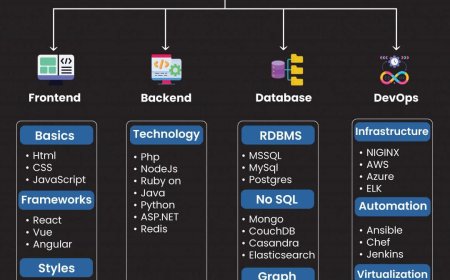How to visit the Omaha Symphony in the Park
How to Visit the Omaha Symphony in the Park The Omaha Symphony in the Park is one of the most cherished summer traditions in Nebraska, bringing together thousands of residents and visitors each year for an unforgettable evening of live orchestral music under the stars. Held annually in the scenic Bob Kerrey Pedestrian Bridge area and surrounding parks along the Missouri River, this free, family-fr
How to Visit the Omaha Symphony in the Park
The Omaha Symphony in the Park is one of the most cherished summer traditions in Nebraska, bringing together thousands of residents and visitors each year for an unforgettable evening of live orchestral music under the stars. Held annually in the scenic Bob Kerrey Pedestrian Bridge area and surrounding parks along the Missouri River, this free, family-friendly event transforms the urban landscape into an open-air concert hall. With its blend of classical masterpieces, popular favorites, and patriotic finales, the Omaha Symphony in the Park offers more than just music—it delivers a cultural experience that embodies community, accessibility, and the enduring power of live performance.
For first-time attendees and longtime fans alike, knowing how to plan, prepare, and fully enjoy this event can elevate the experience from pleasant to extraordinary. Whether you’re bringing a picnic blanket, a group of friends, or your entire family, understanding the logistics, timing, and best practices ensures you make the most of this unique opportunity. This guide provides a comprehensive, step-by-step roadmap to visiting the Omaha Symphony in the Park, covering everything from arrival tips to seating strategies, weather considerations, and insider insights that only locals and seasoned attendees know.
Step-by-Step Guide
Planning your visit to the Omaha Symphony in the Park begins well before the first note is played. This event draws large crowds, and while admission is free, space and amenities are limited. Following a structured approach ensures a smooth, enjoyable experience from start to finish.
1. Confirm the Date and Time
The Omaha Symphony in the Park typically takes place in late July or early August, on a Saturday evening. Exact dates vary slightly each year, so it’s critical to verify the schedule through the official Omaha Symphony website or their verified social media channels. The concert usually begins at 8:00 p.m., with gates opening as early as 5:00 p.m. Arriving early is strongly encouraged, especially if you want a prime viewing spot.
2. Choose Your Viewing Location
The concert is held in an open-air setting with multiple vantage points. The primary viewing area stretches along the riverfront near the Bob Kerrey Pedestrian Bridge, extending into Gene Leahy Mall and the surrounding green spaces. There is no reserved seating—attendance is first-come, first-served. Popular spots include:
- The grassy knoll directly facing the stage (closest to the bridge)
- The elevated terraces near the riverwalk
- The shaded areas under trees near the eastern end of the park
Arriving between 5:00 p.m. and 6:30 p.m. gives you the best chance to claim a central location. If you’re attending with children, elderly companions, or mobility challenges, consider positioning closer to the accessible pathways near the bridge entrances.
3. Prepare Your Essentials
Since the event is outdoors and lasts approximately two hours, preparation is key. Pack the following essentials:
- Blankets or low-backed chairs – Low-profile seating ensures unobstructed views for those behind you. Avoid high-back chairs unless you’re seated at the very back.
- Portable coolers – Small, soft-sided coolers are permitted and encouraged. Pack non-alcoholic beverages, snacks, and light meals. No glass containers are allowed.
- Weather-appropriate clothing – Evenings can be cool, even in summer. Bring a light jacket or sweater. Check the forecast the day before.
- Bug spray and sunscreen – Mosquitoes can be active at dusk, and UV exposure lingers into early evening.
- Flashlights or headlamps – Useful for navigating pathways after dark. Avoid bright white lights during the performance.
- Reusable water bottles – Refill stations are available near restrooms.
4. Plan Your Transportation
Driving to the event is possible, but parking is extremely limited and often fills by early afternoon. Consider these alternatives:
- Public transit – Omaha’s Metro bus system offers routes that stop near the riverfront. Check the Metro schedule for evening service extensions on concert nights.
- Rideshare services – Uber and Lyft drop-off zones are designated near the bridge entrances. Avoid parking in residential neighborhoods—many streets enforce no-parking rules during the event.
- Biking – Bike racks are available near Gene Leahy Mall. The Missouri River Trail provides a scenic, car-free route to the venue.
- Walking – If you’re staying downtown or in nearby neighborhoods like Old Market or Benson, walking is a pleasant and practical option.
5. Arrive Early and Set Up
Arriving between 5:00 p.m. and 6:30 p.m. gives you ample time to find your spot, set up your gear, and explore the pre-concert atmosphere. Many attendees arrive even earlier to claim space near the stage. Once you’ve selected your location, lay out your blanket or chair with care—leave enough room for others to pass behind you. Avoid blocking walkways or fire lanes.
6. Enjoy the Pre-Concert Activities
Before the orchestra takes the stage, the park comes alive with community activities. Local food trucks offer a variety of cuisines—from gourmet tacos to ice cream treats. Artisans often set up booths selling handmade crafts, and children’s activities like face painting and instrument demonstrations are available near the family zone. Take time to wander and soak in the festive energy.
7. Follow Concert Etiquette
Once the performance begins, respect the musicians and fellow attendees:
- Keep conversations quiet during the music.
- Turn off or silence all electronic devices.
- Use flashlights only when necessary—red-light settings are ideal.
- Stay seated during the performance unless you need to leave for an emergency.
- Applause is encouraged after each movement and especially at the end of the concert.
8. Post-Concert Departure
After the final note, the crowd disperses gradually. To avoid congestion:
- Wait 10–15 minutes after the concert ends before gathering your belongings.
- Use designated exit routes marked by volunteers.
- If using rideshare, request your pickup at least 20 minutes after the concert concludes to allow for traffic flow.
- Take all your trash with you—volunteers and city staff will be collecting waste, but personal responsibility keeps the park clean.
Best Practices
Attending the Omaha Symphony in the Park is more than just showing up—it’s about creating a meaningful, respectful, and memorable experience for yourself and others. These best practices, honed by years of attendance and community feedback, will help you maximize enjoyment while minimizing disruptions.
Arrive Smart, Not Just Early
While arriving early is important, arriving smart is even better. Instead of rushing to the front row, consider positioning yourself slightly to the side—this often provides better acoustics and fewer obstructions from taller attendees. The sound system is designed to project evenly across the entire venue, so you don’t need to be directly in front of the stage to hear clearly.
Bring Comfort, Not Convenience
It’s tempting to bring oversized coolers, large umbrellas, or bulky tents—but these items can block views and violate event guidelines. Stick to compact, low-profile gear. A lightweight blanket, a foldable chair under 12 inches high, and a small cooler (under 15 quarts) are ideal. Remember: the goal is to enjoy the music, not to turn your spot into a backyard party.
Respect the Space and the People
The Omaha Symphony in the Park is a shared public space. Be mindful of others: don’t spread out too far, don’t leave belongings unattended, and avoid setting up near emergency access points. If you’re with children, keep them close and teach them to listen quietly during the performance. Many families return year after year because they value the peaceful, communal atmosphere.
Engage with the Music
Even if you’re not a classical music expert, the concert is designed to be accessible. The orchestra often provides a brief introduction before each piece, explaining its historical context or emotional theme. Listen for recurring melodies, dynamic shifts, and the interplay between instruments. Many attendees find that learning just one or two facts about a piece enhances their emotional connection to the performance.
Plan for Weather
Summer evenings in Omaha can be unpredictable. A clear sky can turn cloudy in minutes. Always bring a light rain jacket or poncho—even if the forecast says “sunny.” The concert rarely cancels due to light rain, but it may pause if thunderstorms approach. Stay informed by checking the Omaha Symphony’s website or social media for real-time updates.
Bring a Camera—But Don’t Overuse It
Photography is allowed, but flash photography is prohibited during the performance. Use your phone or camera to capture the ambiance—crowds enjoying music, the lights of the bridge, the stars above. But remember: the real magic is in the live experience. Put the device down during the music and simply listen.
Participate in the Tradition
Many attendees bring a signature item each year—a favorite blanket, a special snack, a tradition of singing along to the finale. These small rituals deepen the emotional resonance of the event. Don’t be afraid to make the experience your own.
Tools and Resources
Successful planning for the Omaha Symphony in the Park relies on a few key digital and physical tools. These resources provide real-time updates, logistical details, and cultural context to enhance your visit.
Official Omaha Symphony Website
The primary source for event details is omahasymphony.org. Here you’ll find:
- Confirmed concert date and time
- Program lineup and featured composers
- Accessibility information
- Weather contingency plans
- Maps of the event layout
The website is updated regularly in the weeks leading up to the event, so bookmark it and check back frequently.
Omaha Symphony Mobile App
The official mobile app (available for iOS and Android) offers push notifications for last-minute changes, interactive maps of the venue, and audio previews of the concert program. Download it before the day of the event to ensure you receive real-time alerts.
Google Maps and Street View
Use Google Maps to explore the event area in advance. Search “Bob Kerrey Pedestrian Bridge” and switch to Street View to virtually walk the paths, identify parking lots, and locate restrooms. This helps reduce confusion on the day of the event.
Weather Apps
Use a reliable weather app such as Weather Underground or the National Weather Service app to monitor conditions in the hours leading up to the concert. Pay attention to humidity levels, wind speed, and the chance of thunderstorms. Evening temperatures often drop 10–15 degrees after sunset.
Local Community Forums
Join Facebook groups like “Omaha Events & Activities” or “Nebraska Families” to connect with past attendees. These communities often share tips on the best spots to sit, which food trucks are worth waiting for, and even the best time to leave to avoid traffic.
Library and Educational Resources
Visit your local public library for free access to classical music recordings and biographies of the composers featured in the concert. Many libraries host pre-concert talks or listening sessions in the weeks before the event. This background knowledge enriches your appreciation of the music.
Public Transit Planner
Use the Metro Omaha Transit app or website to plan your route. Look for bus lines 11, 12, and 22, which serve the riverfront corridor. Evening service is extended on concert nights, but schedules vary—always confirm.
Accessible Services
For attendees with mobility needs, the Omaha Symphony provides designated accessible viewing areas near the bridge entrances. These areas are clearly marked and staffed by volunteers. Contact the orchestra’s accessibility coordinator via their website for advance assistance. Service animals are welcome, and restrooms are ADA-compliant throughout the venue.
Real Examples
Real-life stories from past attendees illustrate how thoughtful preparation leads to unforgettable experiences. These examples highlight common challenges and how they were overcome with simple, effective strategies.
Example 1: The First-Time Family
The Martinez family from Council Bluffs attended the Omaha Symphony in the Park for the first time with their two young children, ages 5 and 8. They arrived at 5:30 p.m., bringing a large picnic blanket, a small cooler with juice boxes and sandwiches, and a portable speaker playing soft background music to help the kids acclimate to the environment.
They chose a spot slightly behind the center, near a tree, which provided shade and a buffer from the crowd. The children were given small, quiet toys to keep them occupied during the pre-concert wait. When the music began, the parents quietly explained the instruments they heard—“That’s the violin,” “Listen to the drums now.” By the end of the concert, the children were clapping enthusiastically and asking to return next year.
Example 2: The Solo Attendee
Jennifer, a 32-year-old teacher from downtown Omaha, attended alone after a long work week. She brought a folding chair, a thermos of iced tea, and a notebook. She arrived at 6:00 p.m. and sat near the eastern edge of the park, where the crowd was thinner. She listened intently, taking notes on the emotional arc of each piece. After the concert, she walked along the riverwalk, reflecting on the music. “It felt like therapy,” she later wrote in a blog post. “I didn’t know I needed that until I heard the strings swell in the second movement.”
Example 3: The Group with Mobility Challenges
A group of six friends, including one member who uses a wheelchair, coordinated their visit using the Omaha Symphony’s accessibility guide. They reserved a spot in the designated accessible zone and arranged for a friend to bring a lightweight, foldable ramp to navigate the slight incline from the parking area. They brought a portable seat cushion for comfort and arrived at 5:00 p.m. to secure the best position. “We were worried about being too far back,” one member said. “But the sound was crystal clear, and we could see every movement of the conductor. It was perfect.”
Example 4: The Weather Challenge
In 2022, a sudden thunderstorm rolled in just 15 minutes before the concert was scheduled to begin. Attendees huddled under awnings, umbrellas, and raincoats. The orchestra delayed the start by 20 minutes while staff monitored the weather. When the skies cleared, the concert began with a special performance of “The Star-Spangled Banner,” followed by a heartfelt thank-you from the conductor. “It felt like the music was a gift,” said one attendee. “Like the orchestra was saying, ‘We’re here for you, even when the world isn’t perfect.’”
Example 5: The Local Tradition
The Thompson family has attended the Omaha Symphony in the Park for 18 consecutive years. Every year, they bring the same red-checkered blanket, the same lemonade recipe, and the same ritual: they arrive at 4:30 p.m., set up in the same spot, and watch the sunset over the river before the concert begins. “It’s not just about the music,” says Mrs. Thompson. “It’s about the rhythm of our lives. This night reminds us where we come from and who we are.”
FAQs
Is the Omaha Symphony in the Park really free?
Yes. Admission to the Omaha Symphony in the Park is completely free for all attendees. There are no tickets required. The event is funded through community donations, corporate sponsorships, and grants to ensure accessibility for everyone.
Can I bring alcohol to the event?
No. Alcohol is strictly prohibited on the concert grounds. This is a family-friendly, public event governed by city ordinances. Violators may be asked to leave.
Are pets allowed?
Service animals are welcome. Pets, including dogs, are not permitted due to crowd safety and noise concerns. Please leave your pets at home.
What happens if it rains?
The concert proceeds in light rain. If thunderstorms or unsafe conditions arise, the orchestra may delay or cancel the performance. Updates are posted on the Omaha Symphony website and social media. There are no refunds because there are no tickets.
Can I bring a drone?
No. Drones and other aerial devices are prohibited for safety and privacy reasons. The airspace above the event is restricted.
Are restrooms available?
Yes. Portable restrooms are located throughout the venue, with ADA-compliant units available. Handwashing stations and water refill points are also provided.
Is there seating for people with disabilities?
Yes. Designated accessible viewing areas are available near the bridge entrances. These areas are flat, spacious, and close to restrooms. Contact the Omaha Symphony in advance for assistance with placement or special accommodations.
Can I bring a stroller?
Yes. Strollers are permitted but should be parked at the edge of your seating area to avoid blocking walkways. Folding strollers are recommended for easier maneuvering.
How long does the concert last?
The concert typically runs for approximately two hours, including a short intermission. The program usually ends by 10:00 p.m.
What if I lose something at the event?
Lost and found items are collected by event staff and held at the Omaha Symphony’s administrative office for one week. Contact the orchestra directly via their website to inquire about lost items.
Can I volunteer to help at the event?
Yes. The Omaha Symphony relies on volunteers for ushering, crowd management, and setup. Visit their website to sign up for volunteer opportunities. It’s a rewarding way to be part of the community.
Conclusion
The Omaha Symphony in the Park is more than a concert—it’s a living tradition, a shared moment of beauty in the heart of the city. It brings together people of all ages, backgrounds, and experiences under one open sky, united by the universal language of music. Whether you’re a lifelong classical enthusiast or someone who’s never attended a symphony before, this event offers an accessible, deeply human experience that transcends the notes on the page.
By following the steps outlined in this guide—planning ahead, preparing thoughtfully, respecting the space and others, and engaging with the music—you transform a simple evening out into a meaningful memory. The orchestra doesn’t just play music; they create a space where community gathers, where silence becomes sacred, and where the ordinary becomes extraordinary.
As you prepare for your visit, remember: the true magic of the Omaha Symphony in the Park isn’t in the grandeur of the stage or the precision of the performance—it’s in the quiet moments between the notes, in the shared smiles of strangers, in the way a single melody can lift a crowd into stillness. Come with an open heart. Bring your blanket, your curiosity, and your willingness to listen. And let the music do the rest.





















